Since the world started, humans have been inquisitive about everything they see around them. This curiosity starts from the time of our birth and keeps on increasing throughout our life. When we get the answers, to what we seek it gives us a sense of fulfilment and joy. But how do we get the answers, to our questions ? Who shows us the way, when we are in doubt ? The answer is of course our teachers. Anybody can be a teacher, and the scope of teaching certainly goes much beyond, the education to get employment. From time immemorial, people have tried their best to find teachers, who can show them, the path to greatness. Many have tried, but only a select few have succeeded. The following description says a few lines, about select Teachers – Students league, that changed the course of history.
Socrates was an ancient Greek philosopher, who was born in 470 BC (an estimated date). He is credited as one of the founders of western philosophy. Although coming from a humble background, Socrates was interested in accumulating knowledge from childhood, something he did by reading the writings of contemporary philosophers. As the son of a stone mason, Socrates first job was as that of a stone mason, followed as a citizen soldier in army of Athens, where he showed considerable courage and sincerity to his duty. But it was his philosophical side, that brought him into prominence in Athens. With long hairs, barefoot and not being fashionably dressed, brought him the wrong kind of attention. Local plays were made that, portrayed him as a fool, preaching a impractical philosophy. The truth was totally different. He was one of the wisest person in Greece, but always tried to avoid any glory and instead chose to lead a simple life. In fact, when Oracle of Delphi (a local famous figure, who was famous for her predictions) predicted that Socrates was the wisest man in Athens, he refused to believe it. It was during his appointment in Athens Assembly, that he started taking decisions and voicing opinions which were morally correct, but unpopular with the majority.
A lots of his actions, can be interpreted in modern day judgement as that of civil disobedience, and modern world heroes like, Martin Luther King and Benjamin franklin were greatly influenced by him. Socrates never accepted payment from the young generation of Greeks, to whom he shared his knowledge free of cost, believing that correct knowledge of philosophy causes greater good of society. This caused Poverty, in his personal life and was one of the causes for his misunderstanding with his wife, Xanthippe. Outside of his home also, Socrates’s constant opposition of the conventional values and opinion of the majority ,and asking unpleasant questions to the people in power, created many enemies for him in the political establishment. So creating an false pretext of, corrupting the mind of youth of Athens, he was put on trial and found guilty. As a punishment Socrates was punished to death, and made to drink poisoned Hemlock. Although Socrates had the means and resources to escape from prison, thanks to some loyal friends ; he refused to do so, as he strongly believed that, what he was doing was right and he would face his enemies rather than escape from them. So finally Socrates chose to die for his convictions, than to escape like a coward.
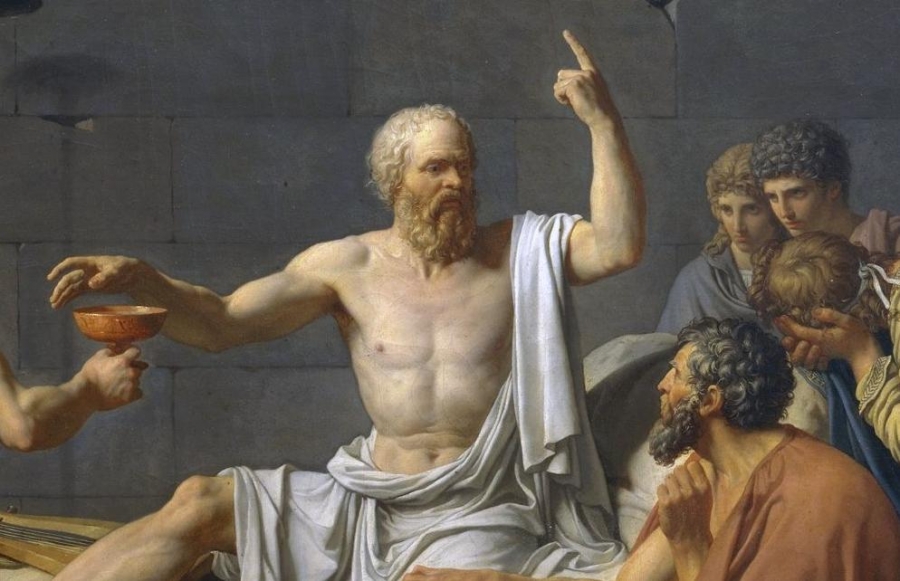
Socrates was a very wise man, most probably the wisest man to live in Greece, at that period ; but he never kept, any written records. Most of the things, we know about his life, comes from the writing of his most famous student – Plato. Plato was a genius student of a equally genius teacher, and was great philosopher in his own right. He was also the founder of the first institution of higher learning in western world – The Academy in Athens(going a step further from Socrates, who never founded a formal school and questioned the concept of a teacher’s ability to impart knowledge. One of a famous quotes proves this point, where Socrates said, I can not teach anybody anything, I can only make them think). Taking a lesson from his teacher – Socrates, Plato took care to write down his entire work, with the result, that his work have survived for the last 2300 years.
Plato was greatly influenced by his teacher – Socrates, and in his work, clear reflection of this can be found. He even tried to help his teacher, at the time of his trial, by paying fine in lieu of his freedom. He was greatly influenced by life and death of Socrates, and the way Socrates was treated by the ruling elite made him reluctant to enter public life. Plato’s work like – Republic, Laws and numerous others are considered to be masterpieces to this day. The academy founded by Plato, prospered for another three centuries after Plato’s death, till it’s destruction by a roman general in 86BC ; and his teachings spread as far as Byzantine Empire and the Islamic world, in the future. Modern western poets like William Wordsworth and Percy Shelly also found encouragement in Plato’s work.
He was an erudite Greek philosopher, and along with his teacher Plato, he is called as “Father of western Philosophy”. He came to the Academy founded by Plato from northern Greece , and joined there at an age of 17 years, and stayed there for the next 20 years, first as a student of Plato & then as a teacher in the Academy, till Plato’s death. Although one of the best students of Plato, he was passed over as Plato’s successor in the Academy, after Plato’s death, because of his closeness to the court of Macedonia. Aristotle was a polymath (a person whose expertise spans a significant number of different subjects), which can be seen from his writings on – physics, metaphysics , zoology, logic, aesthetics, poetry, music, psychology, economics, politics and government. Soon after Plato died, Aristotle left Athens, at the request of King Philip II of Macedonia, to tutor his son – Alexander the Great.
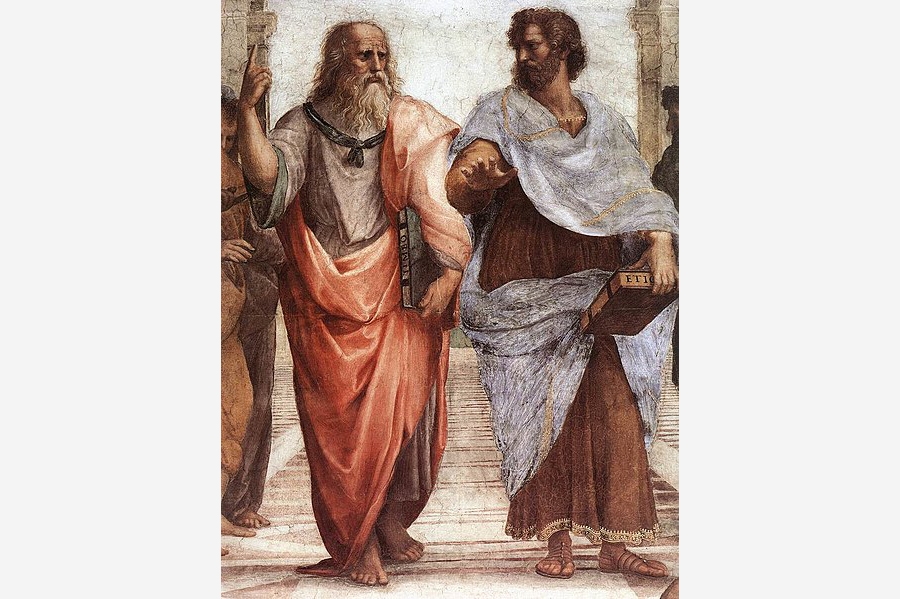
Son of King Philip II of Macedon, hardly anybody in this world would not have heard the name of Alexander. His conquest to rule the entire world started, when he ascended to the throne, at the age of 20 years, after his fathers death.But much before that, when Alexander was just 13 year old, King Philip, his father brought Aristotle, to tutor Alexander. King Philip had destroyed, the hometown of Aristotle – Stageira in one of his previous conquest ; but when Aristotle agreed to tutor Alexander, Philip decided to rebuild the town and repopulate it, by freeing it’s citizens, who were taken prisoners and granting pardon to those, who were living in exile. Such was the kings gratitude for Aristotle, for agreeing to teach his son. The king provided, The Temple of the Nymphs, at Mieza as a classroom for his son’s education. It was here that young Alexander, would get classmates like – Ptolemy, Hephaiston, and Cassander ; some of whom would become his future generals and lifelong friends. Aristotle taught young Alexander about – philosophy, medicine, art ,politics, religion and logic during the three years, that he was with him. Alexander was greatly influenced by Homer’s Iliad, which describes the Trojan war, and kept it with him ,in all his future campaigns. Aristotle’s stone seat, can be seen to this day in his classroom, where he taught his students.
This is a story, which almost every kid in India knows. Almost at the same time, when Alexander was slowly progressing to the east, defeating Emperor Darius of The Persian empire, and moving to the eastern fringes of the Known world, there was a teacher called Chanakya, a poor Brahmin, who used to teach in the oldest university of the ancient world – Taxilla University, the Pride of India. Chanakya was a great teacher of Economics and Politics. But more than that he was a great visionary and a nationalist.He came to know about the fall of Persian empire & an ambitious young Greek King, who aspired to be the emperor of the world.
Teaching in Taxilla University, which was present in kingdom of Taxilla, on the western fringe of India, he knew that it was just a matter of time before Alexander reached the borders of India. He very well knew, that no king on his own, could stop such an ambitious Greek emperor, maybe except, the Magadha Empire – the greatest empire of ancient India, present on the Eastern part of the country and ruled by the notorious and tyrannical king – Dhanananda. So he went to the court of Emperor Dhanananda, but was insulted and thrown out of the court. Furious, he promised to replace Dhanananda, by a more responsible king, who would safeguard the borders of the nation. By chance he came across, a young boy – Chandragupta Maurya, who at even very young age had all the traits of a great leader. He took Chandragupta, under his patronage and groomed him to be a great general and a noble king.
But by this time, Alexander had already struck at the western borders of India and defeated many small kings ; but an uprising by his homesick army forced him to return home. Although too late to stop Alexander himself , Chanakya , did successfully dispose off Dhanananda from his throne and established Chandragupta, as the new emperor and the first king of the Mauryan Empire. After death of Alexander the great, a battle of succession occurred among the generals of Alexanders Army. Seleucus Nicator, soon emerged as the person, who took dominion over the eastern part of Alexander’s empire. By this time Chandragupta Maurya had already reclaimed back, the parts of India, conquered by Alexander. On other hand Seleucus wanted to complete, the incomplete task of Alexander, by taking over India. So in 305 BC, Seleucus met in battle Chandragupta Maurya, the Emperor of India. No longer the small boy, who watched helplessly the conquest of Alexander ; this time Chandragupta under the guidance of His teacher – Chanakya, inflicted heavy losses on Seleucus. The only way Seleucus, could get away, was by a Truce ; in which Seleucus got his daughter married to Emperor Chandragupta Maurya. Due to these heroic acts – Chandragupta Maurya and his teacher Chanakya, achieved legendary status in India.
Anne Sullivan was born in 1866 in Massachusetts, USA. At an age of five years she contacted an eye disease known as trachoma – which gradually, over a period made her blind. Very soon her mother died and her father left her in an charitable institution, along with her brother, who also died soon after ,due to some medical condition. After a few years she managed to get enrolled into the – Perkins school for the Blind in Boston, where she began her studies. Almost a year after, she was approached by father of Helen Keller, a 7 year old blind and deaf girl, to be her teacher. This association of a blind teacher and her deaf and blind student, has become legendary.
Sullivan began to teach vocabulary to Keller, by spelling each word out into into Keller’s palm. Finally Sullivan persuaded Keller’s parents to let her take their daughter to Perkins school for the blind, so she could get better education. This really worked wonders for Helen Keller and also brought much recognition for the school. Slowly Helen Keller achieved prominence as an author, political activist and lecturer. She was the first deaf – blind person to earn a bachelor of arts degree. She campaigned for women’s right to vote, labour rights, anti war protest and socialism. The association Anne Sullivan had with Helen Keller lasted 49 years, till her death, when Helen Keller sat at her bedside, holding her hand. Their relation changed from teacher to governess and finally to companion and then to friend. When Helen Keller died, her ashes were placed at the National Cathedral in Washington, next to those of Anne Sullivan.
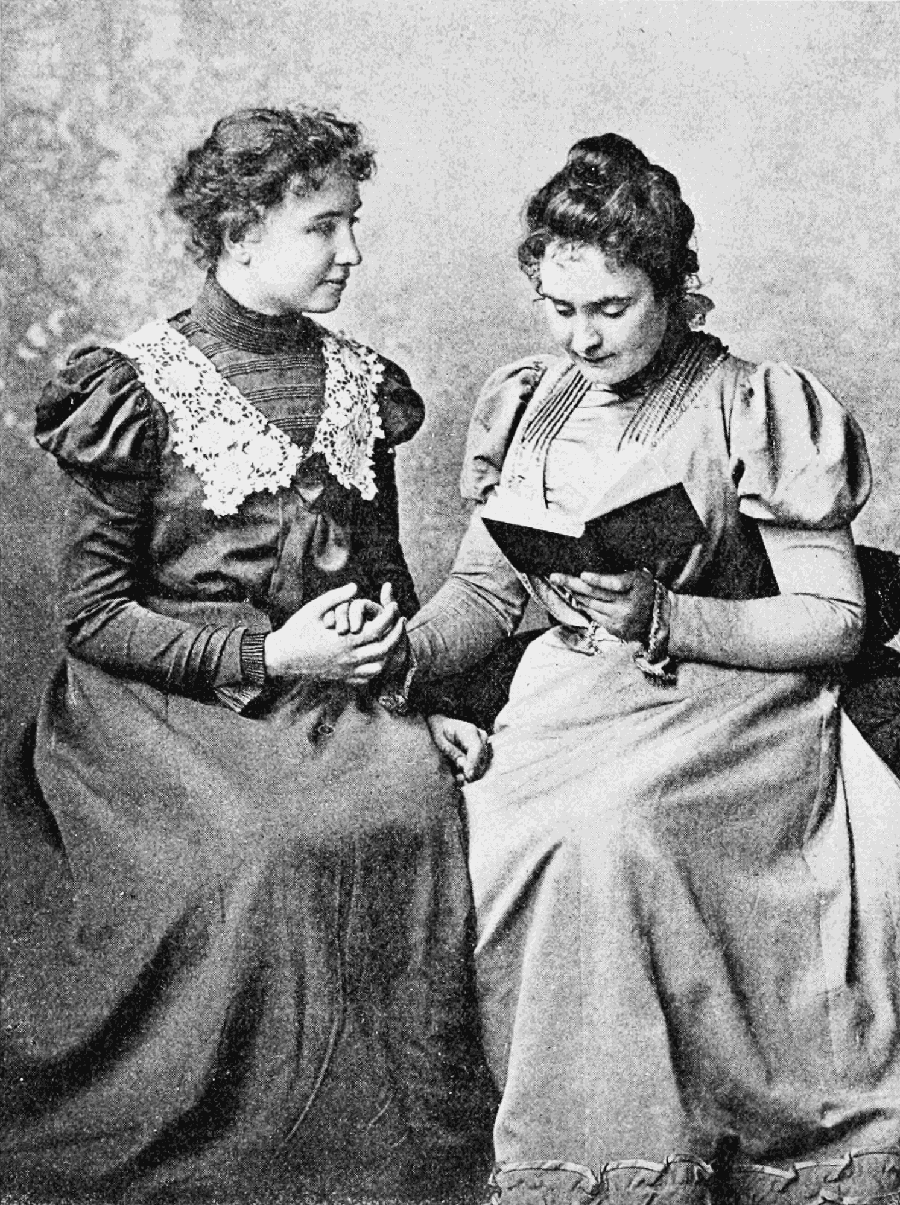
Joseph John Thomson was an English Physicist, credited with discovery of electron. For his work on conduction of electricity by gases, he was awarded Nobel prize in Physics in 1906. He also held respectable positions like Cavendish Professor of Physics at University of Cambridge. During his stay in University of Cambridge, he came across many brilliant students, to whom he was a highly gifted teacher. Six of his research assistants won Nobel Prizes in Physics and two won Nobel Prizes in Chemistry. One of these students – ERNEST RUTHERFORD, was credited with discovery of Proton.
Rutherford was a New Zealand born British physicist, who discovered the concept of radioactive half life ; and differentiated between alpha and beta radiation& also that, alpha radiations are helium nuclei ; for those brilliant works he was also known as father of Nuclear Physics. In 1908, Rutherford was awarded Nobel Prize in Chemistry. Another big success for Rutherford was when he succeeded his teacher Thomson as Cavendish professor of Physics.
James Chadwick was student of Rutherford and it was under his leadership that, James Chadwick discovered neutron in 1932. This Brilliant English physicist was also awarded Nobel prize in Physics in 1935 for his discovery of Neutron. He was also head of the British team, that worked in second world war, to produce the first Atom bomb. Over the years Chadwick received many honours, including a crater on moon being named after him.
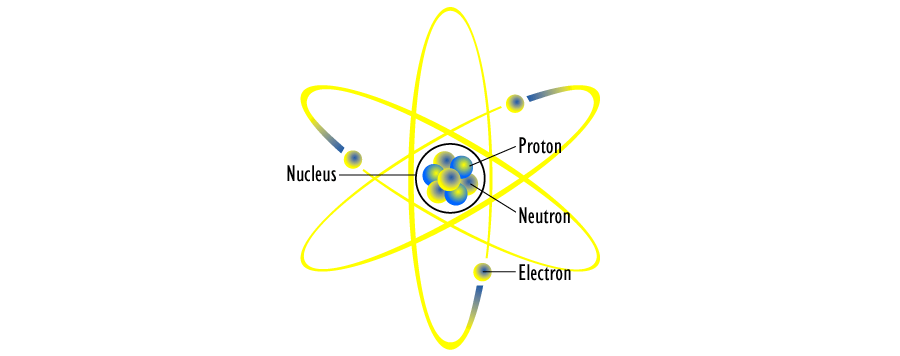
These two Chinese masters, changed the field of Martial arts for ever. Ip man was a Chinese martial artist, and was an expert of traditional southern Chinese kung fu, called as Wing Chun, which specialises in close range combat. Ip man started his training in martial arts at an young age of 12 years. He spent most of his life in Foshan (in south eastern china) and Hong Kong, where he also taught his martial arts skills. Soon he became a very well renowned and a respectable figure and had many remarkable and expert students. Maybe, the most famous of them was the legendary Bruce Lee. Bruce Lee’s real name was Lee Jun Fan, and besides being a martial artist and founder of the martial art Jeet Kune Do, he was also a Hong Kong and American Actor and Film Director. His most remarkable achievements were to popularise martial arts in the west and he was also instrumental in changing the way, Asians were portrayed in American Films.

Swami Vivekananda was a 19th century hindu monk, who was the key figure responsible for spreading Indian philosophies of Vedanta and yoga to the western world. Born as Narendranath Dutta, in 19th century, Calcutta, India (which was under British rule at the time) ; he was into spiritualism and meditation from a very young age. He was a brilliant student from an early age and had varied interest in history, religion, arts, science and philosophy.He also studied western philosophy, scientific advancement and European history during his college days and finally completing his Bachelor of Arts degree, from Calcutta University in 1884. It was during his college days, when reading a poem called “The Excursion” by William Wordsworth, he was advised by his professor, to Visit Ramakrishna Paramahamsa, to understand the word – trance, mentioned in the poem.
Ramakrishna Paramahamsa, was an Indian mystic and yogi, who lived in Calcutta. This meeting would be an turning point in the life of Narendranath. Ramakrishna is considered to be an important figure, in Bengali Renaissance of 19-20th century. In spite of being a yogi, his views were very practical and his approach was to help the common man. This affected Narendranath a lot and he renounced the world and became a monk, and took the name of Swami Vivekananda. He in later years travelled throughout the world spreading the message of universal brotherhood, that was integral to Indian culture and Hindu faith & founded Ramakrishna Math, a religious monastic order, which runs a lots of hospitals, educational institutes for the weaker sections, and has branches across the world, which spreads the symbol of a tolerant and benevolent Hinduism, with interfaith awareness and service to all mankind. Both Sri Ramakrishna and his best & greatest follower – Swami Vivekananda, are held in high regards by all Indians & by many westerners also.
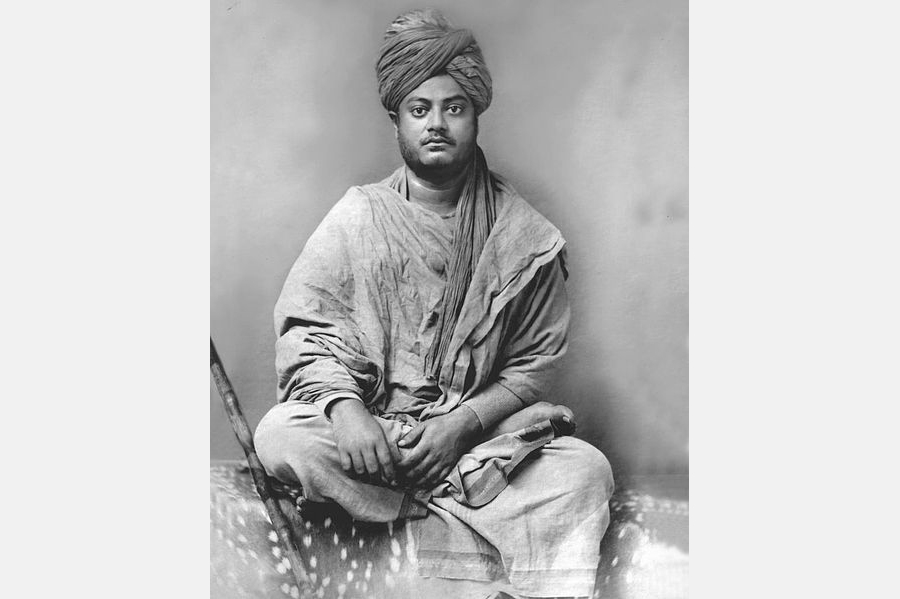
It is very obvious, that no one becomes great on his own. Everybody needs a guide to show him the way. The above examples just prove, that even masters had masters to show them the way and when great teachers get brilliant students, they create history ; of which people talk about, even thousands of years after they are gone.